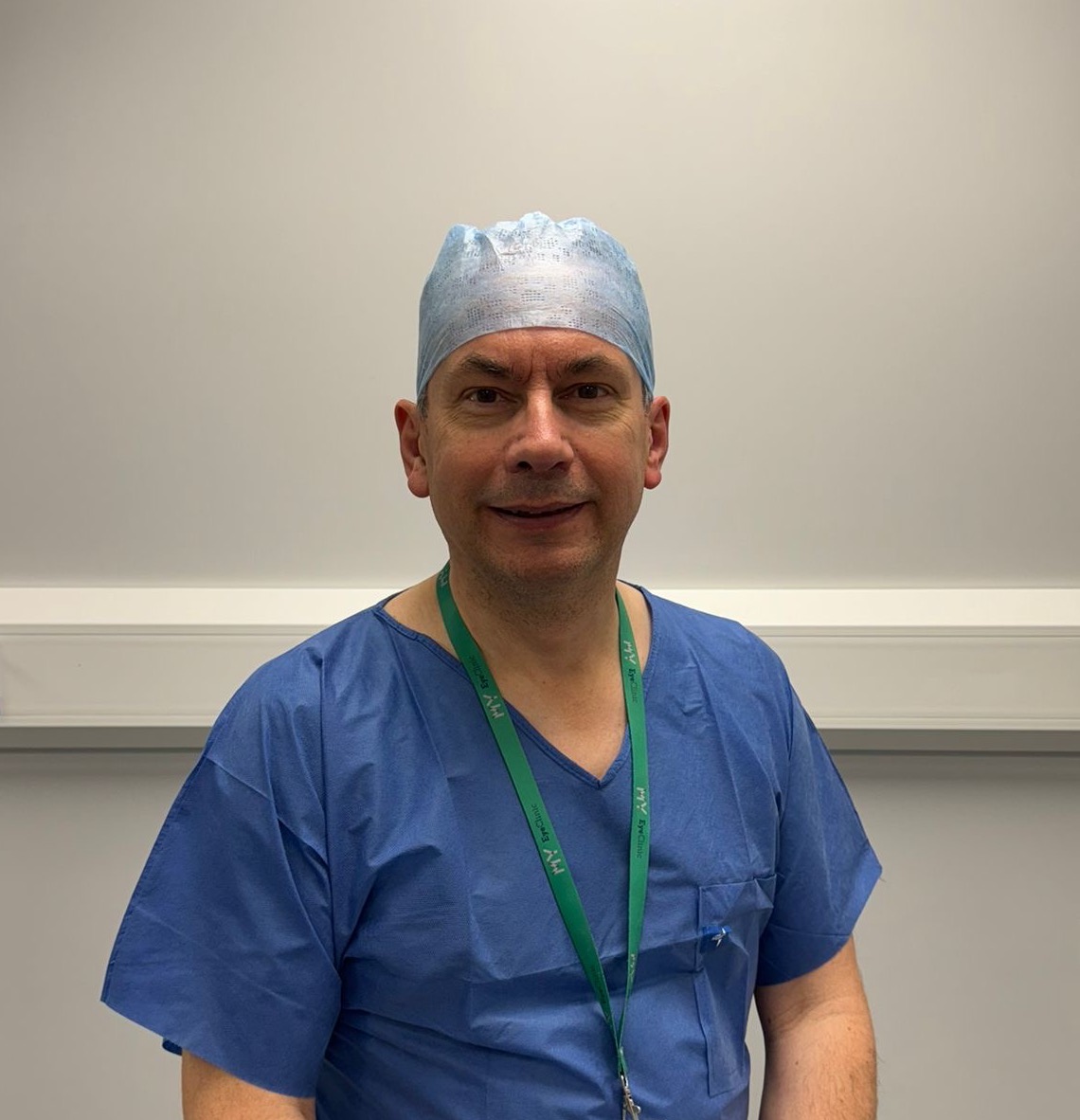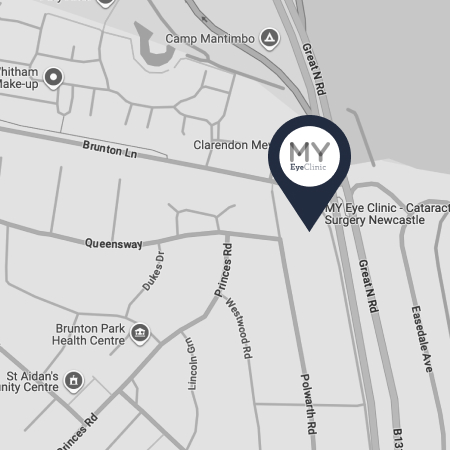Experience the life-changing difference
See how our patients have transformed their vision and their lives. From the frustration of glasses and contacts to the freedom of clear, effortless sight
Experience the freedom of clear vision without glasses
After LASIK, you’ll be free from the physical discomfort of glasses. No more fogging, slipping, or irritation during activities like workouts, yoga, or outdoor sports. You’ll enjoy 20/20 vision without the hassle, giving you the freedom to fully embrace your active lifestyle without limits.
Unlock a new sense of confidence
Without glasses, your confidence will soar, allowing you to fully engage in activities and social events. Embrace your new look and enjoy the peace of mind that comes with clear vision and newfound independence.
Live life to the fullest every day
Imagine starting your morning with a refreshing yoga session, followed by a swim without worrying about glasses. You confidently hit the gym and then enjoy lunch with friends, all while embracing your new look. Every activity feels effortless, allowing you to savour each moment with joy and freedom.
Embracing the new you
Friends and family notice a vibrant change in you. They see your confidence shining through as you engage in activities without glasses. Your newfound freedom inspires admiration, and your radiant smile reflects your happiness. People appreciate your style and energy, viewing you as more approachable and lively than ever.
Experience the life-changing difference
See how our patients have transformed their vision and their lives. From the frustration of glasses and contacts to the freedom of clear, effortless sight.

Unlock a new sense of confidence
Without glasses, your confidence will soar, allowing you to fully engage in activities and social events. Embrace your new look and enjoy the peace of mind that comes with clear vision and newfound independence.

Live life to the fullest every day
Imagine starting your morning with a refreshing yoga session, followed by a swim without worrying about glasses. You confidently hit the gym and then enjoy lunch with friends, all while embracing your new look. Every activity feels effortless, allowing you to savour each moment with joy and freedom.
3 Simple steps to clear vision without glasses and contacts
Laser eye surgery doesn’t have to be complicated. We’ve streamlined the process to make your path to glasses-free living easy and stress-free

Step 1: Get in touch
Ready to explore life without glasses or contacts? Your journey begins with contacting us. Give our friendly team a call on 0191 917 8887 or use our easy online calendar to book a free appointment.

Step 2: We'll meet
At your consultation, we’ll evaluate your eyes, discuss your lifestyle, and answer all your questions. You’ll receive a customised recommendation for the best laser vision correction option for you, giving you clarity and confidence in your decision.

Step 3: Enjoy freedom
After your laser treatment, you’ll experience the freedom of a life without glasses or contacts. Many patients are amazed by how quickly their vision improves and how much easier everyday activities become. Say goodbye to visual limitations and hello to a brighter, clearer future!
Everything you need to know about LASIK
Discover how LASIK can free you from glasses and contacts with answers to the most common questions about the procedure and its life-changing benefits.
- You must be at least 21 years old with stable vision for at least one year.
- Your prescription should fall within treatable ranges for nearsightedness, farsightedness, or astigmatism.
- You need healthy eyes, without conditions like severe dry eye, cataracts, or infections.
- Your corneas must be thick enough to safely create the flap needed for the surgery.
- You should be in generally good health, without autoimmune diseases or conditions that affect healing, like uncontrolled diabetes.
Advantages of LASIK:
- LASIK surgery is very accurate and improves your vision effectively.
- The procedure is painless.
- Recovery is quick.
- It can fix problems like nearsightedness (trouble seeing far away), farsightedness (trouble seeing up close), and astigmatism (when the eye is not perfectly round).
- If needed, it’s easy to do a second LASIK surgery.
Disadvantages of LASIK:
- The surgery creates a small flap on your eye. This flap can sometimes move, get infected, or have skin cells grow underneath it, which may cause problems.
- Loss of best corrected vision (~4% 1 Snellen line)
- Over or under correction, or regression of treatment effect → residual ametropia
- Flap related complications 1-2% (buttonhole, wrinkles, ingrowth, DLK)
- Night vision problems, eg glare and halos
- Corneal haze or scarring
- Dry eyes
- Presbyopia (option of monovision discussed)
- Possible need for enhancement surgery
- Rare complications (<1/1000) with potential for severe sight loss
- Increased risk of simultaneous bilateral surgery (e.g. severe bilateral visual loss)
While LASIK is a great option for many, it’s not for everyone.
Alternatives include TransPRK (Transepithelial Photorefractive Keratectomy), which reshapes the cornea without creating a flap, making it a better option for people with thinner corneas.
Refractive lens exchange (RLE) is another alternative, where the eye’s natural lens is replaced with an artificial one.
Contact lenses and glasses remain non-surgical options for those who are not candidates for LASIK.
- Preparation: We apply numbing drops to ensure you feel comfortable. You’ll rest on a reclining chair, and a small tool helps keep your eye gently open.
- Creating the Flap: Using a precise laser or tiny instrument, we carefully create a thin flap on the surface of your eye.
- Reshaping the Cornea: A laser gently reshapes your cornea to improve your vision. This step takes only a few seconds for each eye.
- Replacing the Flap: The flap is returned to its place, where it naturally heals.
- Recovery: After a short rest, you’re free to go home and begin your recovery.
LASIK surgery makes many people happy because it helps them see clearly without glasses or contact lenses. After LASIK, most people can see as well as they did with glasses or contacts. Many even achieve 20/20 vision or better, which means excellent eyesight.
Most people see at least 20/40, which is the vision needed for driving. How well you see after surgery depends on your eyes before the procedure.
If your vision isn’t as good as expected, you may be eligible for a free enhancement.
Some may still need glasses or contacts, but their prescription will be much weaker.
With LASIK, life becomes easier. You can wake up and see clearly without reaching for your glasses. You can enjoy sports, swimming, and outdoor activities without worrying about lenses or glasses. From the moment you wake up until bedtime, clear vision is with you. This surgery can make daily life more enjoyable and free.
Is relying on glasses and contacts holding you back?
If so, you have the choice to take control of your vision and explore the life-changing benefits of laser eye surgery

Constantly struggling with glasses?
You have to rely on glasses for everything—reading, working, driving. They’re a necessary but frustrating part of your daily routine. Imagine gaining the freedom to do all of these without worrying about lenses or frames ever again.
By choosing laser eye surgery, you can restore your vision, regain your confidence, and enjoy the freedom of living without glasses holding you back.

Feeling restricted by your look?
You feel insecure about how glasses affect your appearance and find yourself frustrated by how they limit your style. Imagine the confidence boost of being glasses-free, enjoying a clearer, more natural appearance that matches how you want to see yourself.

Annoyed by glasses in daily life?
Your busy life means you’re always taking off and putting on your glasses, dealing with fogging or smudging. From work to social activities, glasses are an inconvenience. Now picture your life with clear vision—free from these daily hassles, so you can focus on what really matters.
Join thousands who’ve gained freedom from glasses and contacts
Discover how they ditched their dependence and see how you can, too
We have replaced the images of real patients who provided these testimonials to protect their privacy.
We answer your questions about laser eye treatment in Newcastle upon Tyne
Get a quick overview of everything you need to know about restoring your vision
Academic resources on LASIK
Expand your knowledge about LASIK. (These links will take you off our website.)

Hi, I’m Rob Boyce
After training as an engineer and research scientist, I pursued medicine at Nottingham University, followed by advanced ophthalmology training. With over 20 years as a Consultant Ophthalmologist specialising in Oculoplastic and Lacrimal Surgery, I’m committed to delivering the highest quality care at MY Eye Clinic, using cutting-edge techniques and patient-centred care.
Mr Rob Boyce
Founder and Owner of MY Eye Clinic














